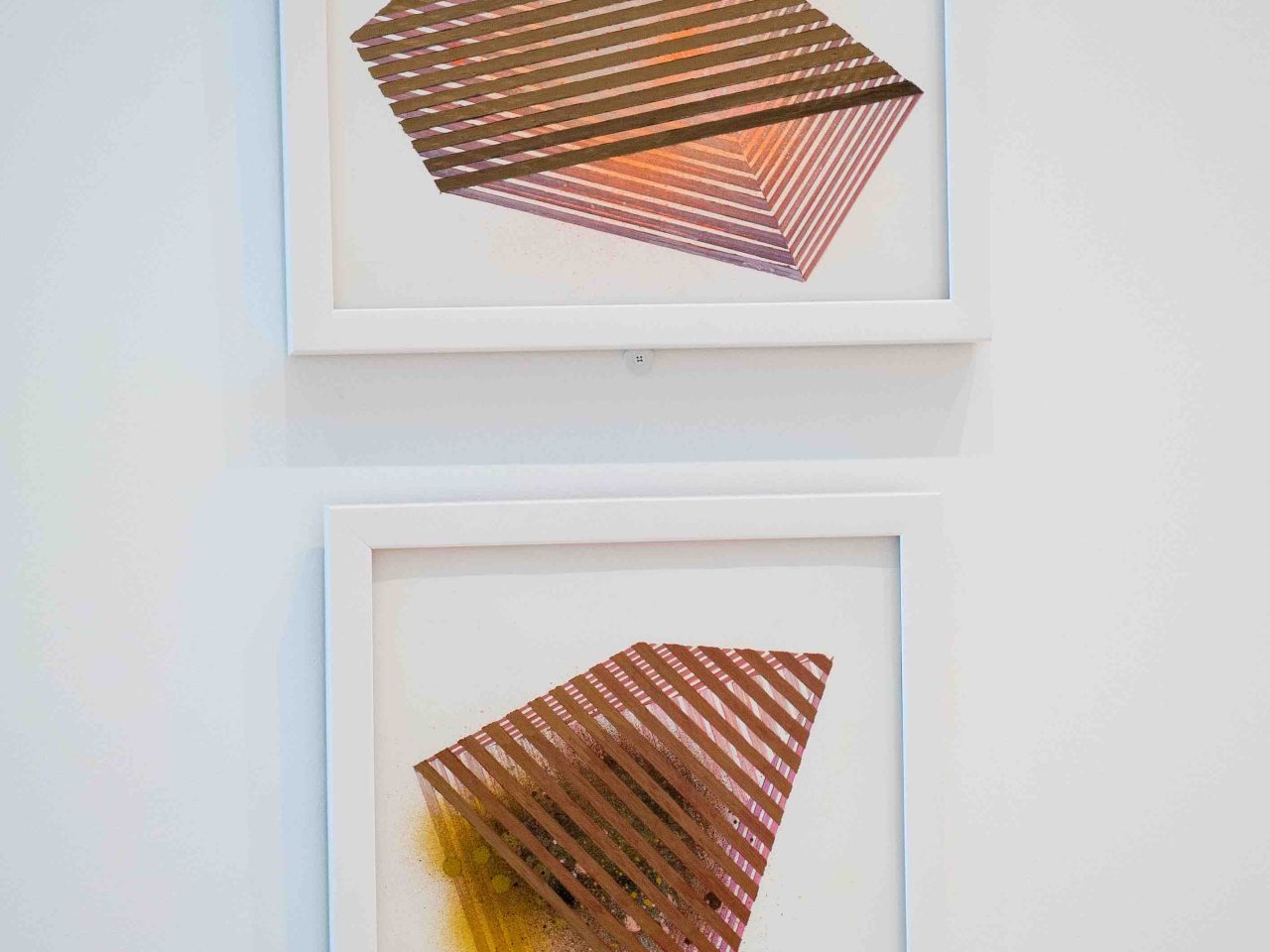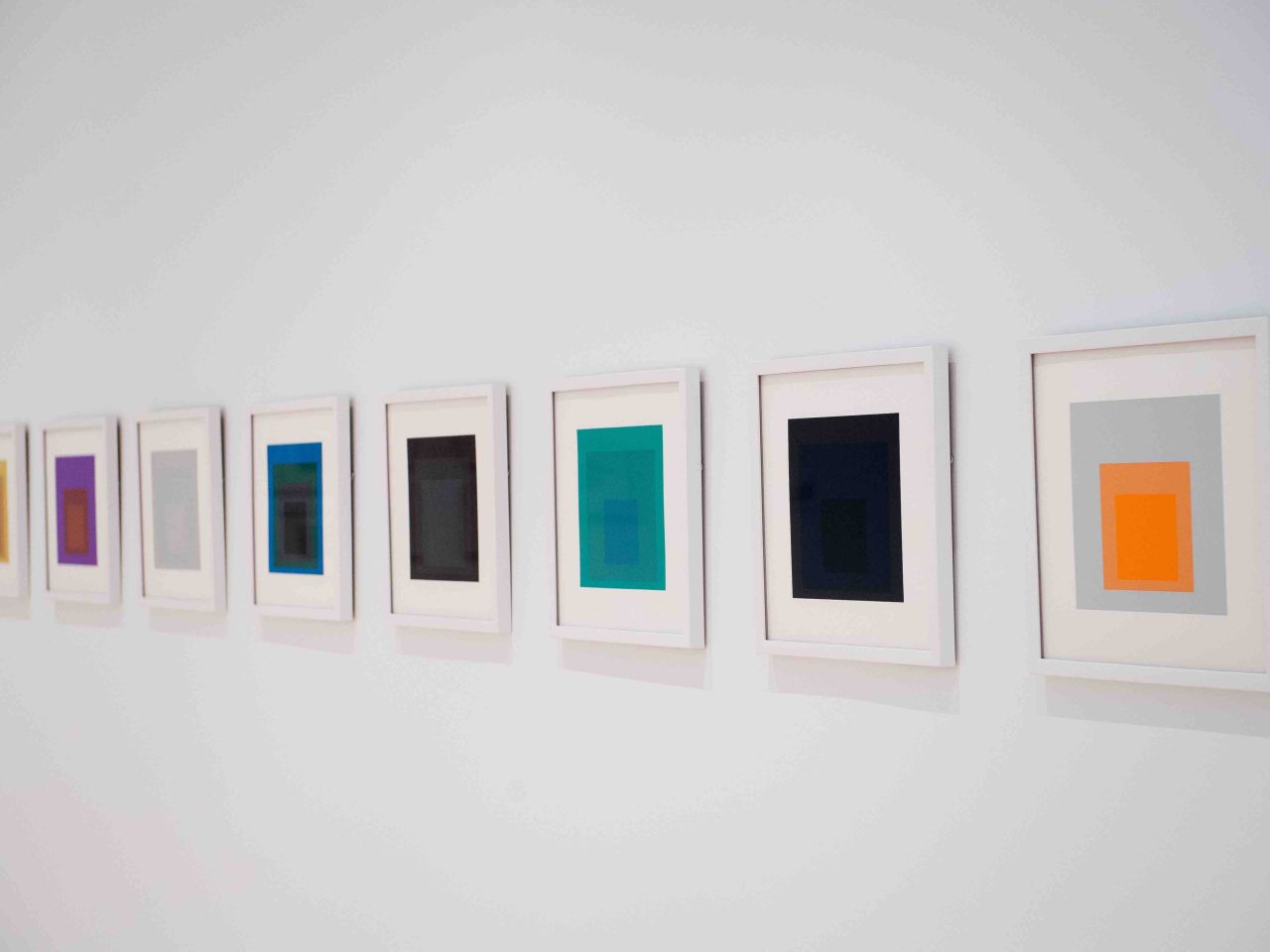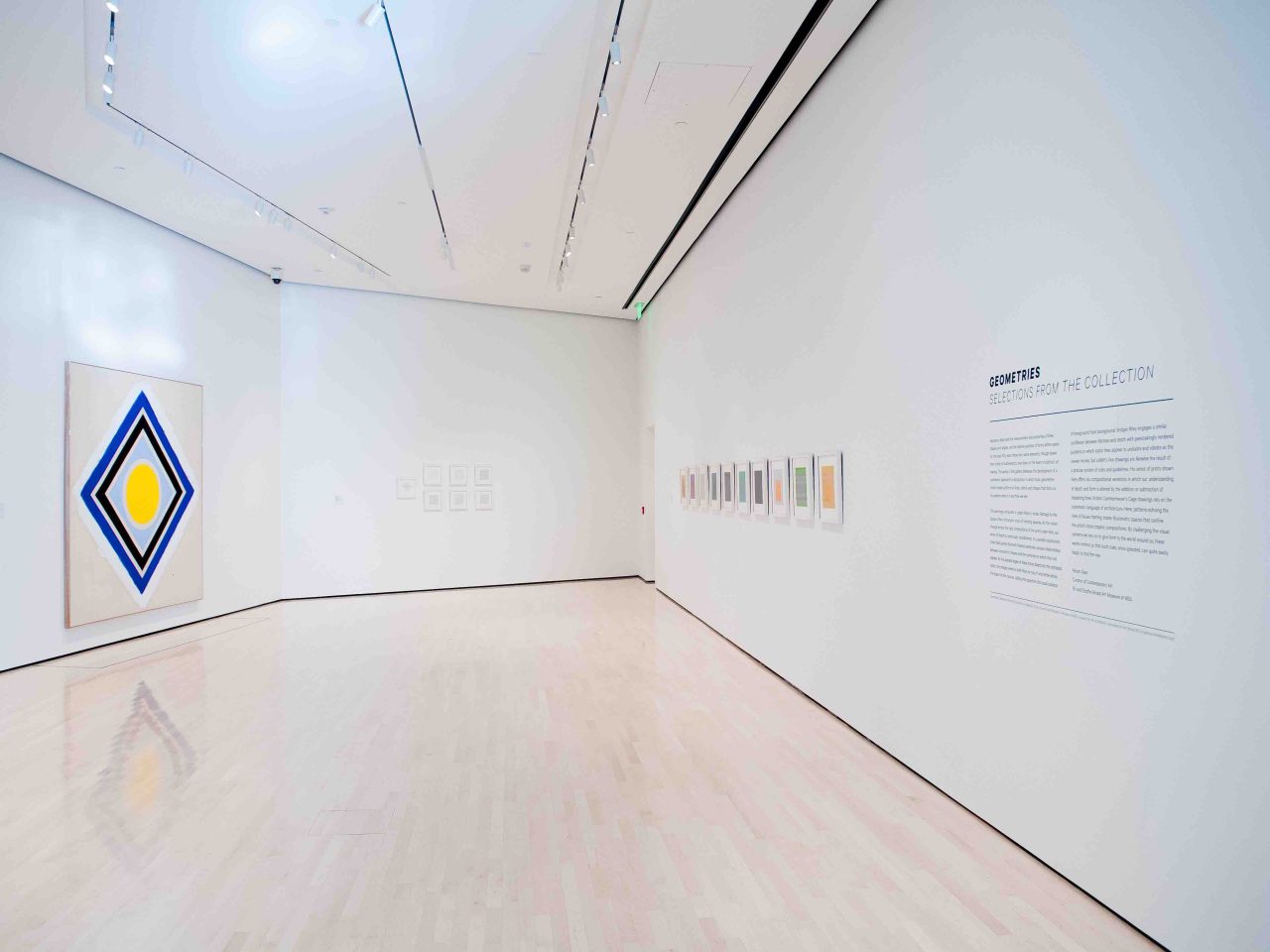Geometries: Selections from the Collection is organized by the Eli and Edythe Broad Art Museum at Michigan State University and curated by Alison Gass, Curator of Contemporary Art. Support for this exhibition is provided by the MSU Broad’s general exhibitions fund.
About the Exhibition
Geometry deals with the measurement and properties of lines, shapes, and angles, and the relative position of forms within space. For the past fifty years these very same elements, though drawn from a field of mathematics, have been at the heart of abstract art making. The works in this gallery delineate the development of a systematic approach to abstraction in which basic geometries create simple patterns of lines, colors, and shapes that force us to question what it is we think we see.
The paintings and prints in Josef Albers’s series Homage to the Square offer a chromatic study of nesting squares. As the colors change across the rigid compositions of the prints seen here, our sense of depth is continually recalibrated. In a parallel exploration, color field painter Kenneth Noland examines various relationships between concentric shapes and the surfaces on which they are applied. As the painted edges of these forms bleed into the untreated fabric, the images seem to both float on top of and settle within the space of each canvas, calling into question the usual isolation of foreground from background. Bridget Riley engages a similar oscillation between flatness and depth with painstakingly rendered patterns in which static lines appear to undulate and vibrate as the viewer moves. Sol LeWitt’s line drawings are likewise the result of a precise system of rules and guidelines. His series of prints shown here offers six compositional variations in which our understanding of depth and form is altered by by the addition or subtraction of repeating lines. Kristin Cammermeyer’s Cage drawings rely on the systematic language of architecture. Here, patterns echoing the lines of house framing create illusionistic spaces that confine the artist’s more organic compositions. By challenging the visual systems we rely on to give form to the world around us, these works remind us that such cues, once upended, can quite easily begin to fool the eye.






